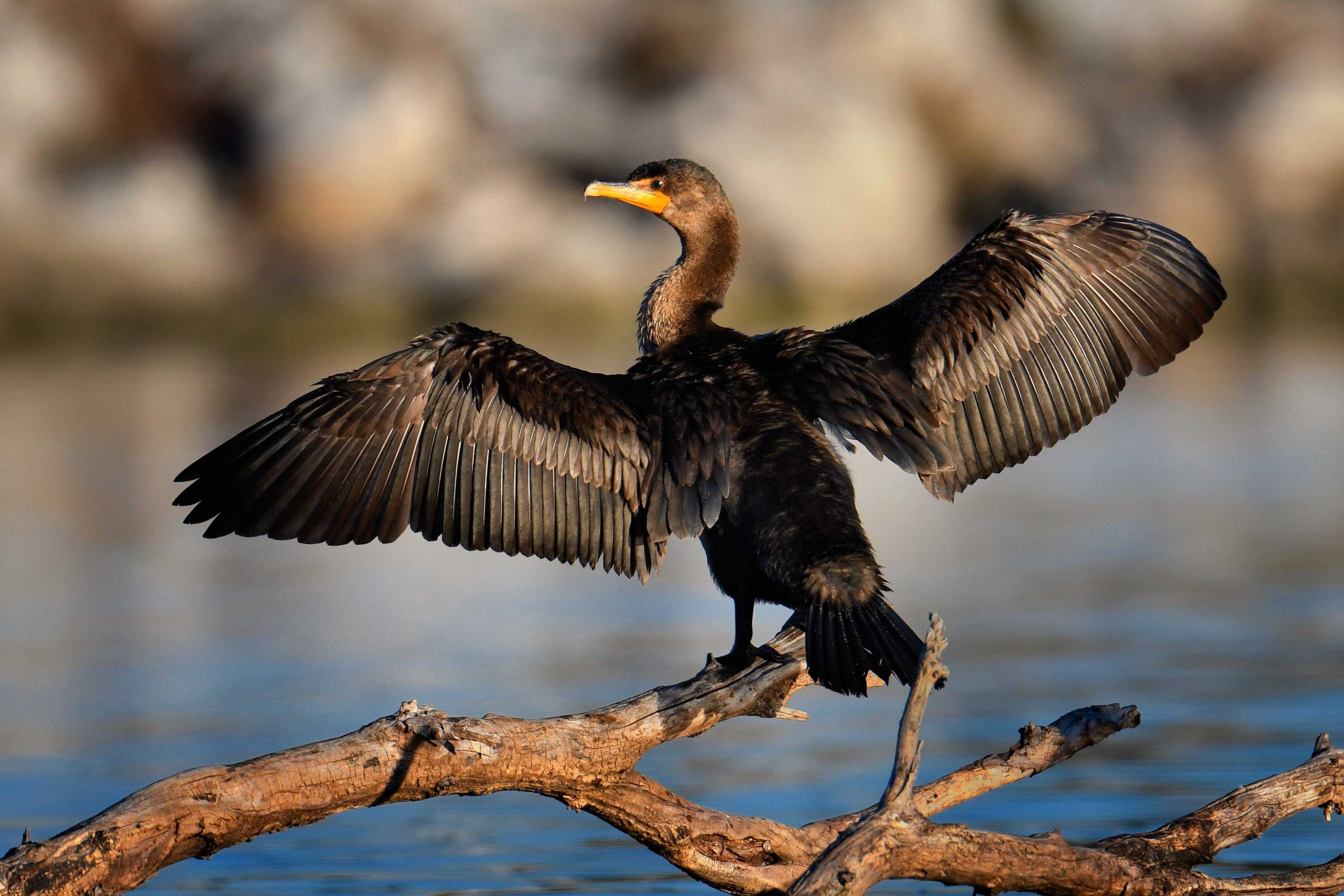
By Monica Macoubrie, Wildlife Education Specialist
When we think of Nebraska’s predators, we typically picture coyotes in the fields or hawks circling overhead. But some of the state’s most impressive hunters live under the surface of our lakes, rivers and wetlands.
Northern pike wait in the weeds like underwater wolves; snapping turtles strike with powerful jaws; herons can spear fish in an instant; and even dragonfly nymphs — tiny but fierce — ambush tadpoles and minnows. Freshwater predators come in all shapes and sizes, and they’re all part of what keeps Nebraska’s water habitats balanced.
Northern Pike – Ambush Artists
This predator in Nebraska has earned plenty of names that match its aggressive personality—Northacuda, Slough Shark, Hammer Handle and my personal favorite, the Water Wolf. Northern pike are true piscivores, meaning they primarily eat other fish, though they’ll also go after frogs, salamanders and occasionally even ducklings.
Their long, torpedo-shaped bodies are olive-green, providing camouflage among weeds and vegetation. With sharp, backward-slanting teeth and fins set toward the back of their bodies, they can launch from a standstill with explosive power, whipping their tails to ambush prey from a bed of weeds or behind a submerged log. Their ability to stay perfectly still for long stretches, combined with that sudden burst of speed, makes northern pike one of the most efficient hunters in Nebraska’s freshwater ecosystems.
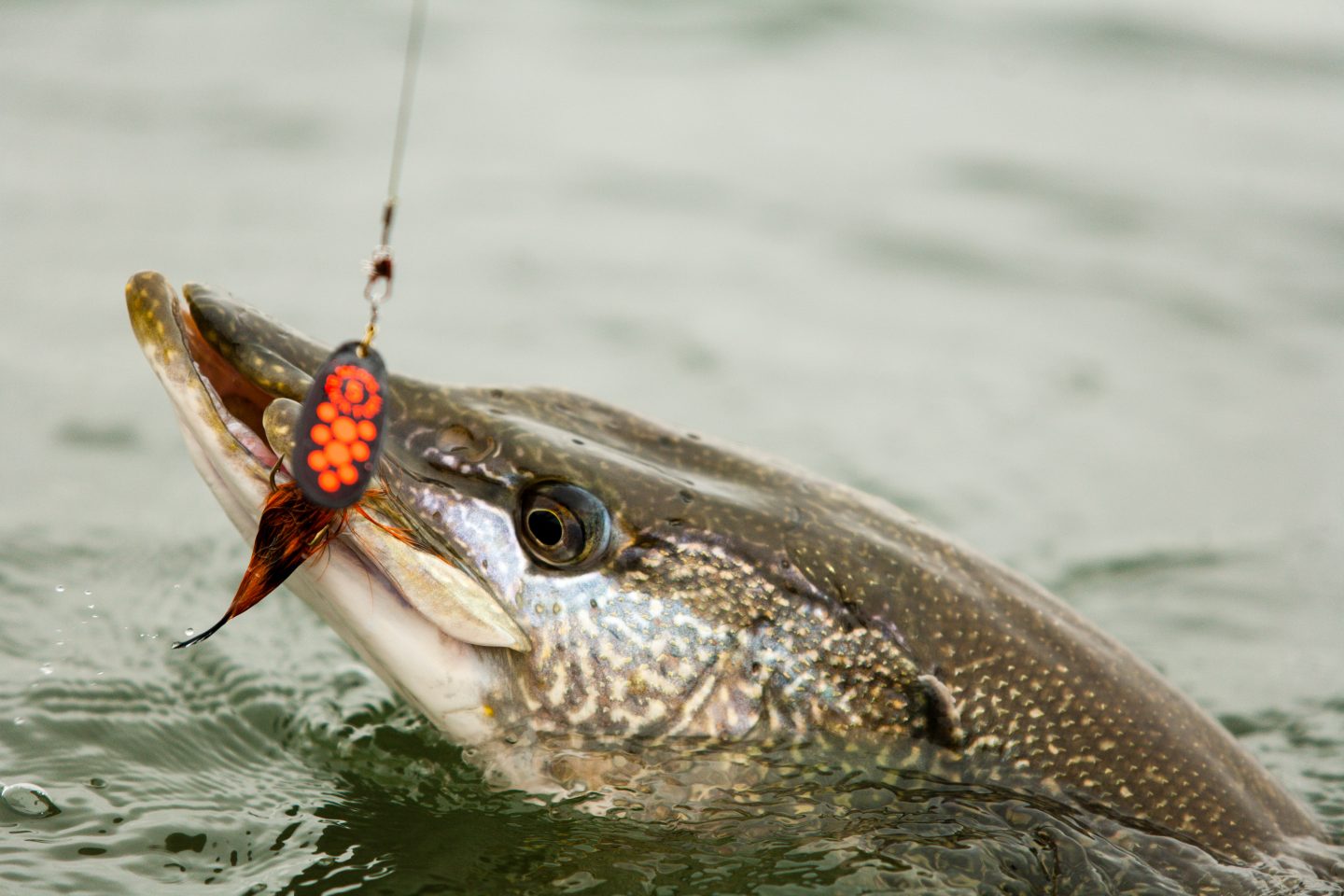
Flathead Catfish – The Nighttime Predator
Flathead catfish are one of Nebraska’s most formidable freshwater predators, and they do most of their hunting under the cover of night. These large, powerful fish can grow over 50 pounds, using their broad, flat heads and strong jaws to ambush prey in rivers and reservoirs. Unlike northern pike, flatheads aren’t built for quick strikes — they rely on patience, waiting in deep holes or near submerged logs and structures until the perfect moment to attack. Their brown-to-yellow coloration helps them blend seamlessly with muddy river bottoms and logjams, making them excellent ambush predators.
Opportunistic but selective, flathead catfish primarily feed on other fish, including sunfish, bass and even smaller catfish. Their big mouths and firm grip let them take on prey much larger than you might expect. Flatheads are solitary hunters, often staking out a single territory for long periods and only moving when it’s time to feed. Unlike channel catfish, which will readily scavenge, flatheads almost always prefer live prey, making them true hunters in Nebraska’s waters.
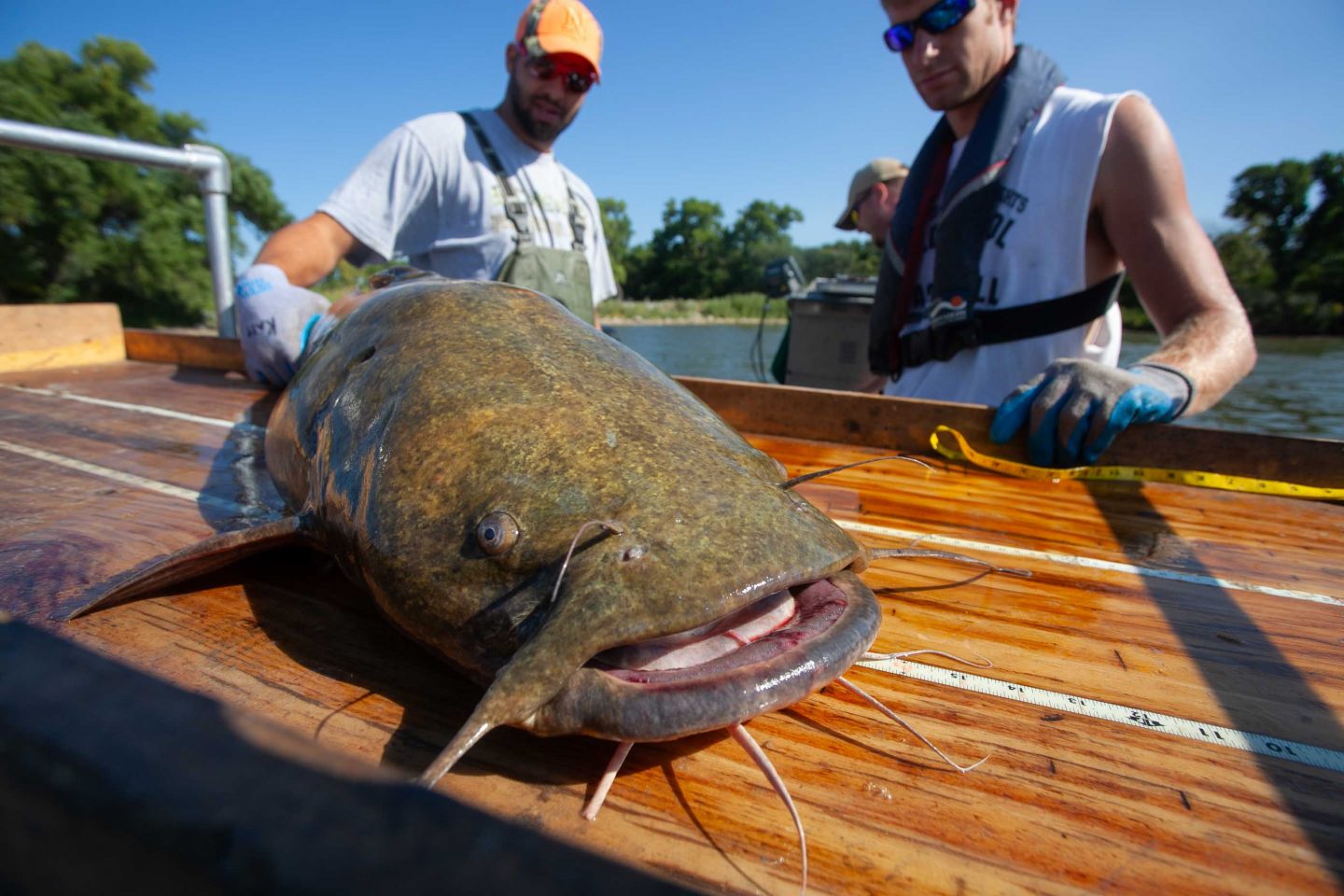
Double-crested Cormorant – The Skilled Fishers
Double-crested cormorants are one of Nebraska’s most efficient bird predators in freshwater ecosystems. These sleek, black waterbirds are expert divers, using their webbed feet to propel themselves underwater in pursuit of fish. They can dive up to 25 feet below the surface, chasing prey with incredible speed and accuracy.
Unlike many birds that grab fish from the surface, cormorants hunt entirely underwater, using their hooked bills to catch and hold slippery fish. They are opportunistic feeders and will go after a wide variety of fish depending on what’s available, from small minnows to larger game fish. Cormorants often hunt in groups, coordinating dives and taking advantage of schools of fish to maximize their success.
Great Blue Heron – The Patient Hunter
Great blue herons are some of Nebraska’s most recognizable freshwater predators. Often seen along the shores of lakes, rivers and wetlands, these birds are masters of patience and stillness. Their long legs and sharp, spear-like bills allow them to wade quietly through shallow water, waiting for the perfect moment to strike.
Herons eat a wide range of prey, from fish and frogs to crayfish and even small mammals. They hunt by standing perfectly still or moving slowly, then lunging with a lightning-fast jab of their bill. In some cases, herons have even attempted to swallow prey that was too large, sometimes leading to fatal choking, giving the phrase “your eyes are bigger than your stomach” a whole new twist.
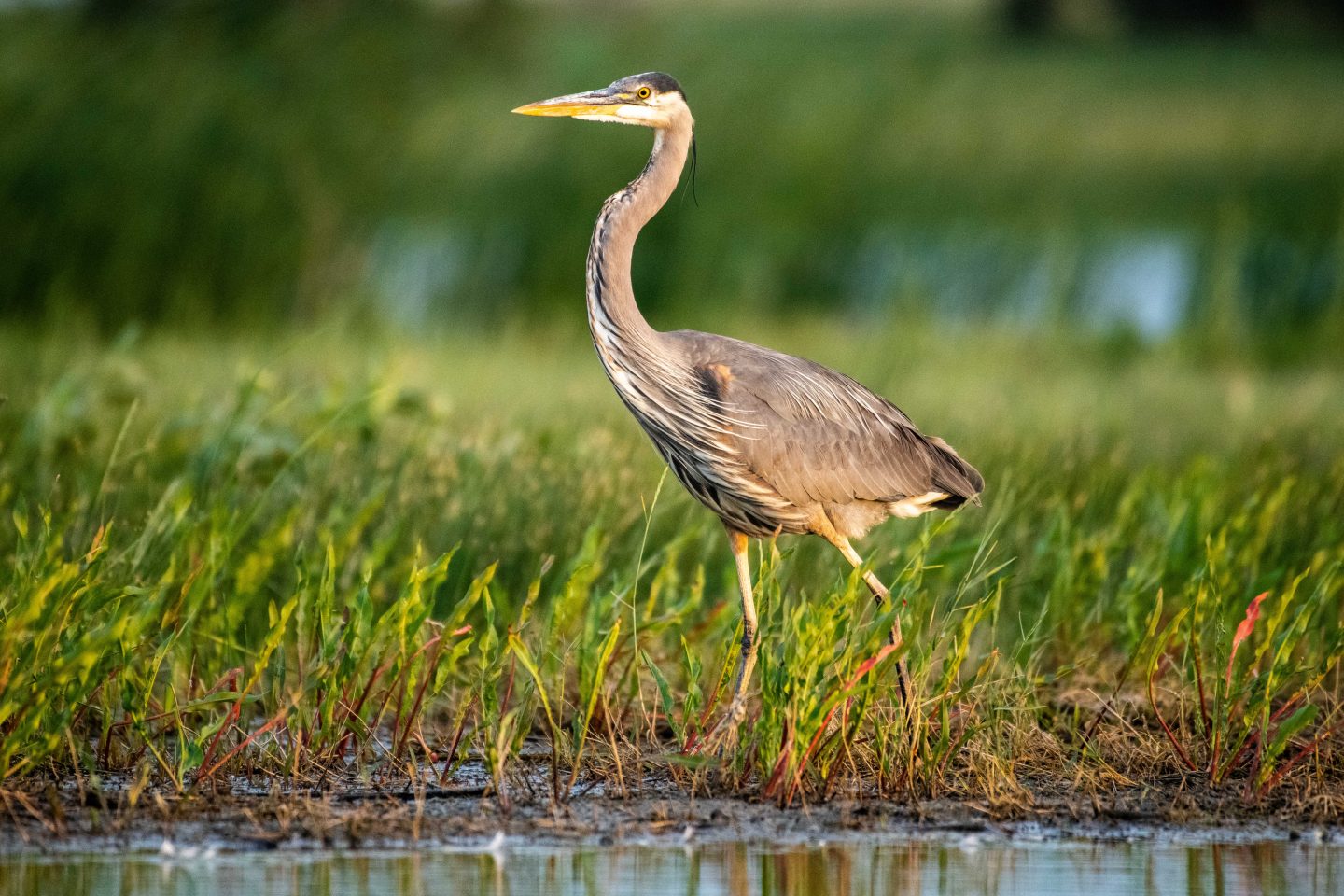
River Otters – The Playful Predator
River otters are one of many freshwater hunters that are mammals. These sleek, semi-aquatic animals are perfectly built for life in the water, with long, streamlined bodies, webbed feet, and powerful, muscular tails that make them incredible swimmers. They use these adaptations to chase fish, crayfish, frogs and other aquatic prey in rivers, streams, ponds and wetlands — and their agility allows them to outmaneuver almost any prey in the water before heading onto land to hunt there as well.
Otters are playful hunters, often sliding along riverbanks or diving repeatedly to flush out prey, but behind that playfulness is serious skill. With sharp teeth and lightning-fast reflexes, they can catch fast-moving fish and avoid potential predators. River otters are also highly intelligent and curious, often hunting in small family groups and using teamwork to herd fish into shallow areas where they’re easier to catch.
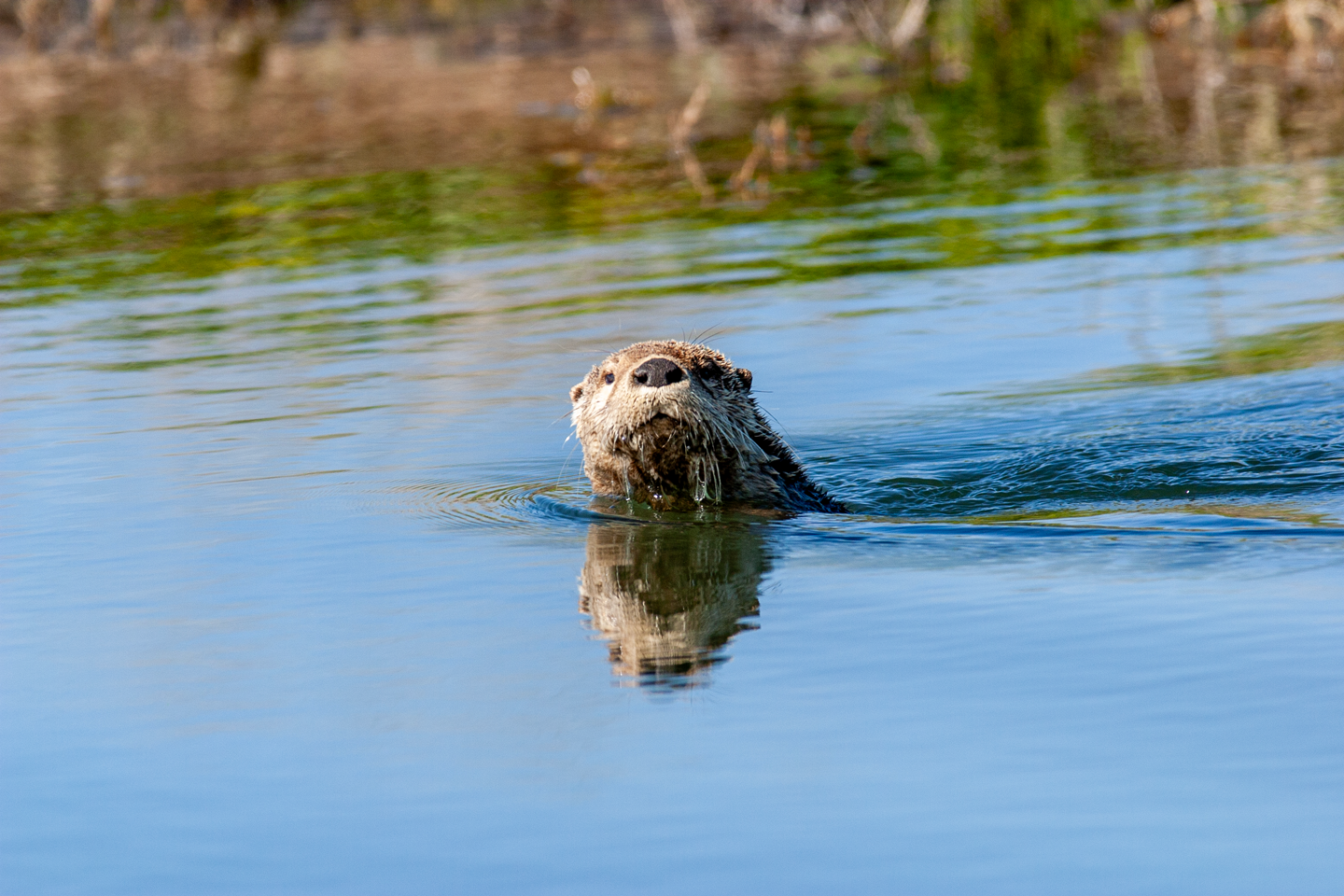
Dragonflies – Predators from Water to Air
Dragonflies are fierce hunters at every stage of life, making them one of Nebraska’s most effective insect predators. Their larvae, called nymphs, live in ponds, lakes and slow-moving streams where they ambush small aquatic creatures like mosquito larvae, tadpoles and tiny fish.
Equipped with extendable jaws, these nymphs can snatch prey with lightning speed, making them highly efficient. Once they mature into adults, dragonflies take to the air as agile hunters, feeding on flying insects such as mosquitoes, gnats and even smaller dragonflies. Both larvae and adults play an important role in controlling insect populations, and as hunters, they have the highest predator success rate: a whopping 97% efficiency.
The dragonfly’s incredible speed, and unique body structure, were the inspiration behind the design of the alien creature in the classic sci-fi movie Alien.
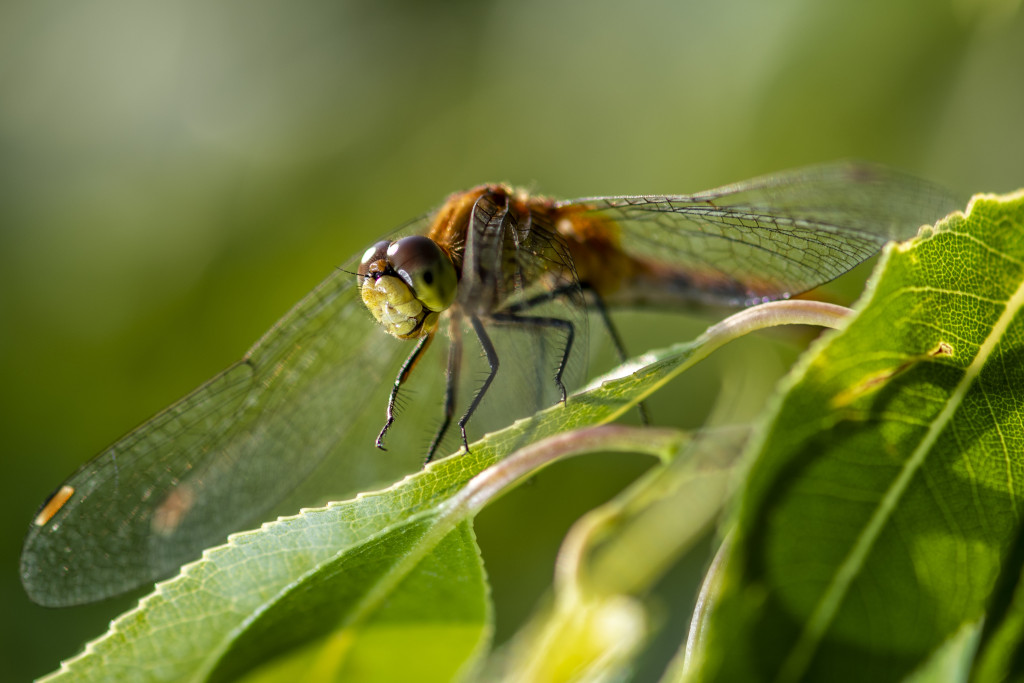
Snapping Turtle – The Ancient Predator
These ancient reptiles have been around for millions of years, earning the nickname “living fossils.” Snapping turtles are equipped with incredibly powerful jaws capable of delivering one of the strongest bites in Nebraska’s waters. They are patient ambush hunters, often lying nearly motionless on river or pond bottoms, hidden among mud, vegetation or logs, waiting for fish, frogs and even unsuspecting birds to come within reach. While their movements may seem slow and deliberate, their strike is astonishingly fast, allowing them to snatch prey with exactitude.
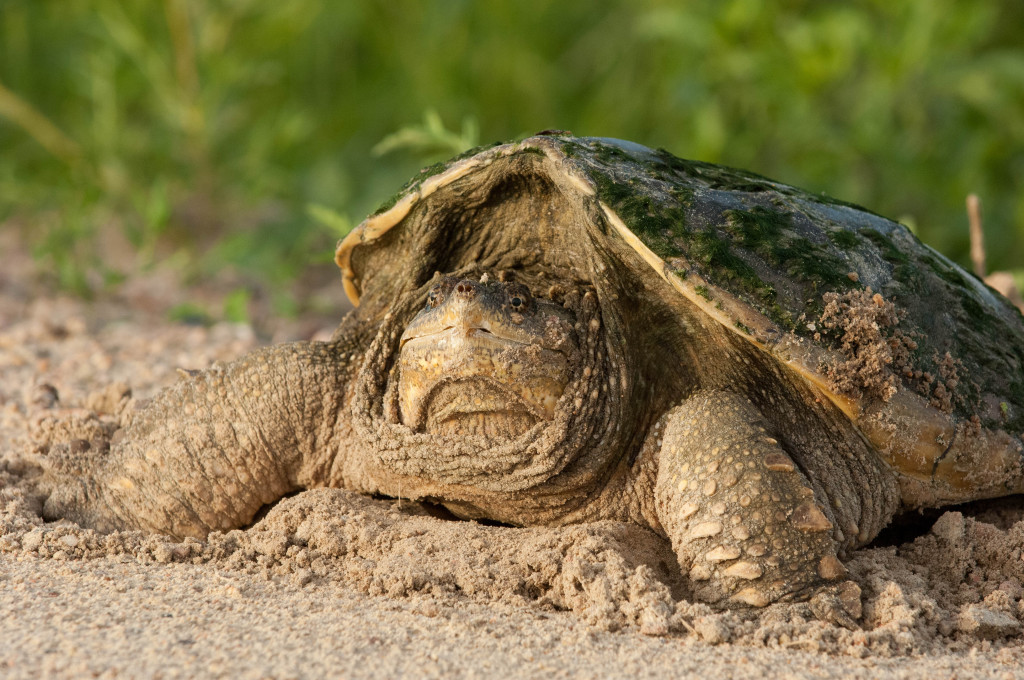
Nebraska’s freshwater ecosystems are full of incredible predators, each with their own strategies, strengths and quirks. Together, these predators showcase the diversity, adaptability and sheer skill of Nebraska’s aquatic wildlife — and remind us that life beneath the water’s surface is just as dynamic and fascinating as what we see on land.
